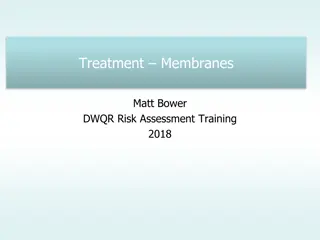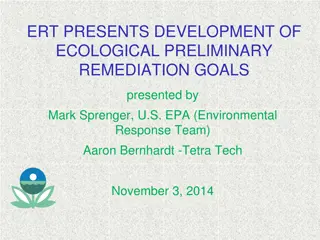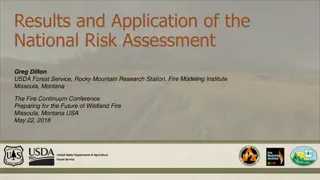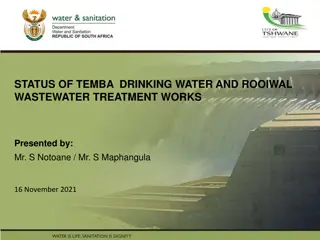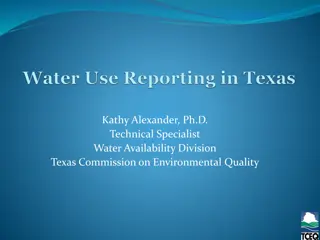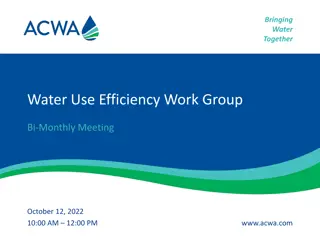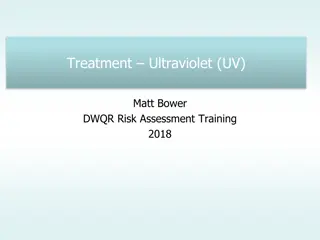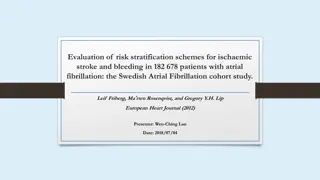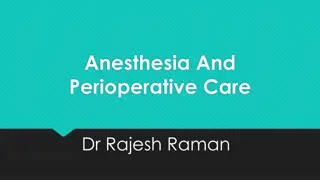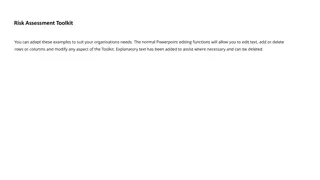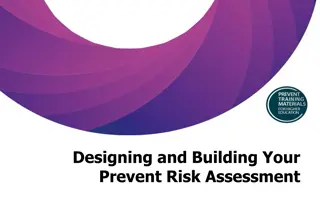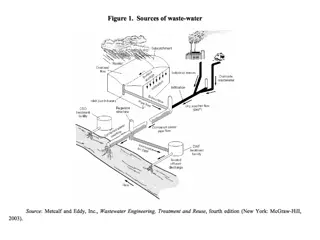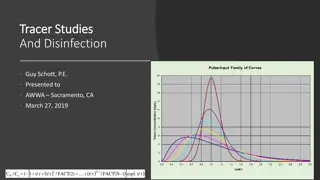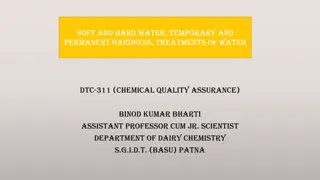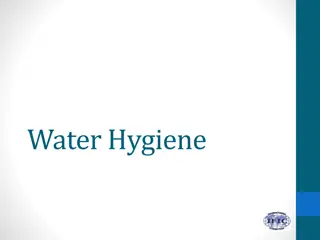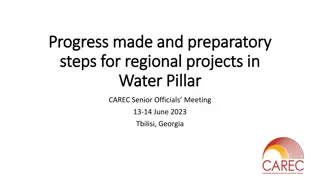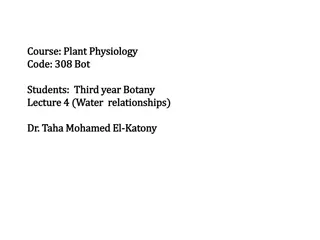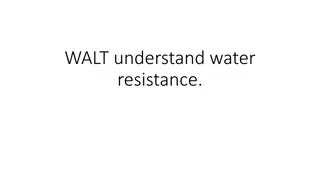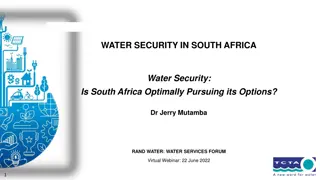Overview of Ozonation Treatment in Water Risk Assessment Training
Ozonation treatment is a powerful and effective method for disinfection but comes with complexity, cost, and safety concerns. It is highly toxic, effective against bacteria, and can break down organic molecules. Key points to watch for include treatment philosophy, safety features, and maintenance requirements. Questions focus on risks related to water quality, equipment failure, inadequate ozone generation, maintenance issues, safety arrangements, and contact arrangements.
- Ozonation treatment
- Water risk assessment
- Disinfection method
- Safety concerns
- Maintenance requirements
Download Presentation

Please find below an Image/Link to download the presentation.
The content on the website is provided AS IS for your information and personal use only. It may not be sold, licensed, or shared on other websites without obtaining consent from the author. Download presentation by click this link. If you encounter any issues during the download, it is possible that the publisher has removed the file from their server.
E N D
Presentation Transcript
Treatment - Ozonation Matt Bower DWQR Risk Assessment Training 2018
Overview Short-lived form of oxygen Generated onsite Powerful oxidant and disinfectant, highly toxic Effective against bacteria and Crypto Can break down large organic molecules (e.g. pesticides ) Costly to use and manage No lasting residual
Usage O3 is unusual on PWS (cost, complexity, safety) Air / oxygen needs to be thoroughly cleaned and dried before passing through dielectric. Usually dosed into water as gas via diffusers in a contact tank Operates on residual control (Typical 0.2mg/l) Excess O3 (offgas) destroyed by heating to high temp Needs safety measures gas detection and alarms plus auto-shutdown O3 is very corrosive all fittings must be high grade stainless steel Can get online monitors and colorimetric test kits to measure O3
Key Points to Watch For Why is O3 being used? (Do they know?) What is the treatment philosophy? (dose, contact time) How is residual being monitored? Safety features, construction, back up power supply Maintenance (O3 generator, contact tank, destructor) Byproducts Bromate (PCV 10 g/l) Minimise dose, contact time Avoid recirculating ozonated water Need for further disinfection?
Questions TOZ1 Is there a risk of water presented for ozonation being of inadequate quality for ozonation to be effective? Water that is to be ozonated needs to be of a certain quality otherwise ozonation will not be effective due to an excessive ozone demand and poor diffusion. Some pre-treatment may be required. Ozone generators are complex instruments that require a clean air supply and a reliable source of power. There should be evidence that the target ozone dose is calculated from an accepted evidence base, and that this is achievable with the equipment installed. TOZ2 Is there a risk that ozone generation equipment could fail? TOZ3 Could the amount of ozone generated be inadequate for the volume of water to be treated? TOZ4 Could lack of maintenance compromise the ozone generation process? Ozone generators require specialist maintenance (beyond the scope of most PWS owners/users). This should be in accordance with manufacturer's specifications. TOZ5 Are safety arrangements around the generation and use of ozone inadequate? Ventilation should be adequate and suitable gas monitoring and venting should be installed within enclosed spaces. TOZ6 Could the contact arrangements (diffusers, tank) prevent a sufficient ozone residual being achieved? How is the ozone gas transferred to the water? Are the arrangements likely to provide sufficient mass-transfer? If diffusers are used, how are these monitored/maintained to ensure bubbles are as small as possible? Is the contact tank sufficiently sized? The system should have sufficient control such that the ozone dose parameters can be varied (gas flow and feed gas concentration). Recommended settings for all variable parameters should be documented on site. If the ozone generation process fails, does the supply shut down? Are there back up arrangements to ensure that water can still be treated to an acceptable quality? Are all elements of the ozone system being maintained to an acceptable level? TOZ7 Is there the potential for process control parameters (e.g. gas flows, target residuals) to be insufficiently defined and documented? Is there a risk of unozonated water passing into supply in the event of process failure? Could lack of maintenance compromise the ozone contact process (lack of diffuser / injector / tank cleaning)? TOZ8 TOZ9 TOZ10 Could use of inappropriate materials compromise the resilience of the process (due to corrosion)? Ozone and ozonated water are highly corrosive. Generally only high grade stainless steel fittings and pipes should be used in this application. TOZ11 Is there a risk that a lack of monitoring will prevent adequate process control? Is there a risk that O3 dose is inappropriate for application? It should be possible to reliably and continuously monitor all necessary parameters for the ozonation system (feed gas concentration and ozone in water residual as a minimum). The ozone dose should be as low as possible - the aim should be to meet ozone demand without leaving a significant residual in the water. Residuals > 0.2 mg/l leaving the contact tank are probably excessive and risk off-gassing, by-products and corrosion. The ozone dose should be tightly controlled to ensure the risk of bromate formation is minimised. TOZ12 TOZ13 Is there a potential for bromate formation due to lack of awareness/ process control? Is there a risk that surplus ozone will not be collected and destroyed safely? TOZ14 Surplus ozone from the generator and off-gassing in the contact tank should be purged and destroyed using a dedicated ozone destructor (usually installed as part of the ozonation system). The ozone destructor will require periodic maintenance.


